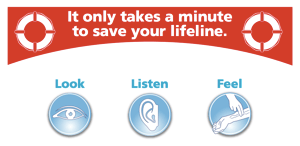Process of Care, Part I: Hemodialysis Vascular Access Process of Care Overview
A quick review of the process of care is critical to understand how the proposed KDOQI Vascular Access Guidelines will impact the dialysis facilities and thus the patients.
The 1997, 2000 and 2006 KDOQI VA Guidelines, along with the Fistula First, Catheter Last body of work supported the use of the standardized physical exam for AV Fistulae (AVF) or AV Grafts (AVG). This examination is termed “access monitoring.” A physical examination is a universal way to assess the status of an AVF or AVG. As a dialysis nurse, I learned the  simple steps of the physical exams many years ago from Dr. Gerald Beathard and have since taught the examination alongside Dr. Beathard at many professional education offerings along with the help of wonderful patient volunteers.
simple steps of the physical exams many years ago from Dr. Gerald Beathard and have since taught the examination alongside Dr. Beathard at many professional education offerings along with the help of wonderful patient volunteers.
The Fistula First, Catheter Last Work Group used the steps of the physical examination to create the One Minute Check. The concept was to use Look, Listen and Feel of cardiopulmonary resuscitation (CPR) to make the check possible for a layperson (patient and caregivers), as well for novice and experts on the dialysis access care team. Most dialysis team members responsible for routine needle cannulation are Nephrology Patient Care Technicians (PCT). Each state regulates its scope of practice and many restrict assessment skills to a licensed nurse. The One Minute Check must be performed before needle cannulation. The check was intended to be quick as time restraints are a treatment issue in the dialysis unit for both the PCT and the patients.




